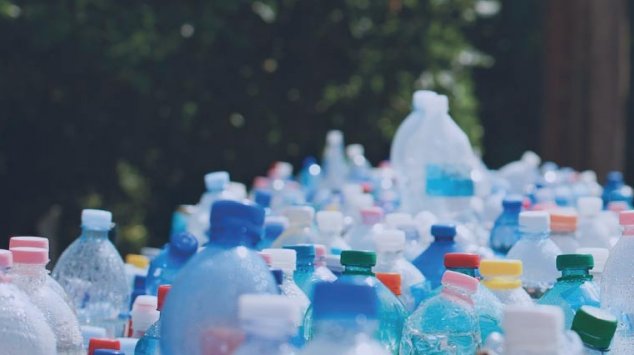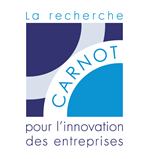Environment : protection and monitoring, natural and climate risks, depollution
This category includes all environmental activities not specifically covered by “Recycling and waste processing” and “Water”, particularly protection and monitoring, natural and climate risks and soil decontamination, etc.
Carnot Institutes strongly involved
And also
Examples of partnerships with companies in the sector
Rock Eval® 7S : a geochemical analysis for oil exploration or soil study in just a couple of hours, with few milligrams of rock or soil.
Partnership Carnot IPFEN Ressources Energétiques Institute - Vinci TechnologiesAnalysing carbon and sulphur compounds in rocks and soil is absolutely essential in geochemistry. Thanks to the partnership between Carnot IFPEN Ressources Energétiques Institute and Vinci Technologies, the Rock Eval 7S analyser® combines instrument, reference materials, calibration methodology and analytical software to deliver unprecedented results.
Rock Eval® 7S : a geochemical analysis for oil exploration or soil study in just a couple of hours, with few milligrams of rock or soil.
Analysing carbon and sulphur compounds in rocks and soil is absolutely essential in geochemistry. Thanks to the partnership between Carnot IFPEN Ressources Energétiques Institute and Vinci Technologies, the Rock Eval 7S analyser® combines instrument, reference materials, calibration methodology and analytical software to deliver unprecedented results.
Supporting Innovation
Rock Eval® is based on thermal analysis technology invented by IFPEN. It is capable of analysing carbon compounds in rocks, soil or any organic compound in less than two hours. It is used by industrial firms, analytical and research labs for fossil fuel prospection (assessing the petroleum potential of sedimentary rocks), analysing soil that has been polluted by hydrocarbons or soil organic matter (key indicator of fertility and carbon storage capacity based around the notion of carbon sinks). The most recent version – the Rock Eval 7S analyser® – which has been marketed commercially since 2019, has an additional feature that analyses the sulphur content of samples and yields more reliable and more accurate results. The first results are available after about an hour of processing, whereas traditional analytical methods are more costly, take longer and require the use of solvents. Specific reference materials and technical calibration guidelines make it possible to calibrate very precisely for each type of application, supported by specific features in GEOWORKS® software.
The client needs
By providing high-tech firms with sensors and lab instruments, especially for analysing rocks and geofluids, Vinci Technologies has become a global leader in tech solutions in the oil and gas sector over the past 50 years with around 100 engineers working in France, India and the US. The Company invests 10% of its revenues in R&D. Its partnership with the Carnot IFPEN Ressources Energétiques Institute has enabled it to develop and market several hundred Rock Eval® models spanning different generations of the product, each one yielding better results and incorporating new features. With a view to consolidating its position as pioneer and staying ahead of the pack, Vinci Technologies and Carnot IFPEN Ressources Energétiques have been looking at new features for a new generation of this equipment. The challenge for this new Rock Eval 7S analyser® has been to quantify the sulphur content of petroleum, kerogen and rock, to distinguish between organic and inorganic sulphur compounds in rock, and to deliver enhanced results through more effective calibration (multi-point and specific to each application), underpinned by new hardware and software components.
Partnership
Carnot IFPEN Ressources Energétiques Institute is a big R&I stakeholder in the energy transition. It helps companies to develop competitive solutions in new energies and minimise climate-environment impacts and to make fossil fuels use more sustainable. Vinci Technologies has been working with Carnot IFPEN Ressources Energétiques since 1993. The Rock Eval 7S analyser® has been able to draw on 15 years of Carnot basic and applied research to develop new technological features and analytical methods – protected by four patents – and enhance the quality of its analyses. The SME has included five new reference materials which, coupled with a new calibration protocol, have enhanced the reliability of Rock Eval®. The company's technological developments have endowed the product with new electronics and system software, a brand new interface and specific features from GEOWORKS® geochemical analytical software. Thence, a product with a real competitive edge was unveiled at the 2019 annual conference of the American Association of Petroleum Geologists in Texas.
A number of instruments have already been sold. The Rock Eval® range contributes nearly 10% of Vinci Technologies’ revenue and the company was recently able to hire two engineers. These results are a testimony to the value of a long-term “research” partnership for tackling the challenges of an SME working in the oil industry where regulations on sulphur are becoming increasingly stringent. Fresh studies should make it possible to add even more features to the Rock Eval 7S analyser® and consolidate the dominant position of these partners in geochemical analysis.
A new process that uses hydrated lime for preventing “bleeding” in overheating roads with a controlled impact on the environment.
Partnership Clim'adapt Carnot Institute - LhoistHeatwaves can inflict serious damage on roads. Lhoist has developed a new process that is both curative and preventative and easy to deploy. Clim’adapt – Carnot Cerema Institute – has helped to limit the technique’s environmental impact.
A new process that uses hydrated lime for preventing “bleeding” in overheating roads with a controlled impact on the environment.
Supporting Innovation
Successive heatwaves damage roads by causing “bleeding” in bituminous pavement where the asphalt and the aggregate become separated. The asphalt binder forces its way to the pavement surface, creating dangerous areas with very poor grip, especially for two-wheeled vehicles. To remedy this and avoid damaging roads during extreme weather, road maintenance departments if they are unable to use hydroblasting to eliminate the outermost layer, often spread sand or gravel. This creates loose chippings and cannot really prevent damage to the road surface. Lhoist has come up with a solution that is both curative and preventative and involves spreading a special slaked lime-based formulation using machinery equipped with a tank and a spray boom. The operation may be performed at any time of the day and does not require the deployment of special fixed signalling equipment. However, if this innovative technique is to be used on a widespread basis, its environmental impact must be limited. For example, if the thin layer of lime spread on the surface is washed away during a rainstorm, it should not pose a threat to nearby natural areas. It was Carnot Clim’adapt Institute that came up with a solution to this aspect of the innovation.
The client needs
Lhoist is an international group that operates around a hundred sites in 25 countries and has, over the course of a century, become a global leader in lime, dolime and minerals. Lime in various different forms is omnipresent in construction and civil engineering. It improves the driveability and mechanical performance of road and motorway subsurfaces, is used to blend hydraulic road binders and facilitates recycling of excavation waste. Hydrated or slaked lime enhances the durability of asphalt surfaces on roads. Lhoist has developed a specific slaked lime formulation designed to prevent “bleeding”. The Asphacal® BL range may be applied in a preventive manner and immediately restores a safe driving surface. However, part of the thin film of lime left on the surface may be washed away during the heavy rains common during hot weather and safety guidelines for using hydrated lime recommend that it should not be released into the environment.
Consequently, Lhoist really needed to be able to provide the local councils in charge of a large part of the road network with solutions in relation to the environmental impact of the process. Carnot Clim’adapt Institute designed and deployed a research protocol for assessing the impact of this technique on the surrounding environment, particularly on nearby wetlands. The initial findings helped to identify the areas where the product could be used without any risk and to adapt the quantity of the product to be applied to the most sensitive areas. A full-scale test conducted on a secondary road near Puy-de-Dôme in central France in 2020 made it possible to refine the conditions for using the technique.
Partnership
Cerema, Carnot Clim’adapt Institute, helps stakeholders to design and develop urban planning infrastructure. It helps them transition to a more frugal, carbon-light and environmentally friendly economy.
Lhoist was able to leverage Clim'adapt's expertise in hydraulics, infrastructure, the environment and environmental chemistry. It could also benefit of its equipment, which included a “rain generator” that can produce rainfall of controlled intensity and duration over several square metres. A three-phased experiment was conducted to assess the impact of lime leaching during a rain shower, by quantifying and evaluating the repercussions of lime flow into a watercourse near a treated surface. After some theoretical studies, the amount of lime that leached into water following different types of rainfall events was measured during the experimental phase. Physical and chemical analyses of the water collected were combined with hydrobiological tests performed on the aquatic environments of a life-size experimental site to develop findings concerning the long-term environmental impact.
The initial results were used to develop guidelines for natural areas based on how sensitive they are and they convinced a number of local councils to experiment with Asphacal® BL during the summer of 2020.
Clim’adapt provides Lhoist’s innovation with the guarantees expected by local councils who get a more sustainable solution for tackling the problem of “bleeding”. The partnership has demonstrated that this highly-affordable technical innovation is a real boon for local authorities both in terms of their budgets and their social responsibility.
INDUNOR provides the auto and construction sectors with natural foam, free from volatil organic compounds
Partnership ICÉEL Carnot Institute - INDUNORIndustrial firms want expandable or flexible foam insulation! These foams are made from synthetic resins and handling and using them involves proven health risks due to the presence of formaldehyde and other VOCs. By teaming up with Lermab (Carnot ICÉEL Institute), Indunor – a specialist in tannin production – has come up with alternative natural resins that can be used to make pollutant-free foam.
INDUNOR provides the auto and construction sectors with natural foam, free from volatil organic compounds
Industrial firms want expandable or flexible foam insulation! These foams are made from synthetic resins and handling and using them involves proven health risks due to the presence of formaldehyde and other VOCs. By teaming up with Lermab (Carnot ICÉEL Institute), Indunor – a specialist in tannin production – has come up with alternative natural resins that can be used to make pollutant-free foam.
Supporting Innovation
Studies performed since the 1980s into the harmfulness of formaldehyde and volatil organic compounds have led certain governments to limit or even prohibit their use. The hazards of exposing employees to chemical risks, as well as consumer protection requirements are forcing industrial companies to come up with new formulae for producing the foams that have become so essential in thermal and electrical insulation and soundproofing. Indunor's engineers wished to harness certain characteristics of tannins – and their extensive expertise in tannin extraction – to come up with a biosourced component that could replace petrochemical-based resins. This Argentine-based company has been working with tannins from the quebracho – a tree that is native to the Gran Chaco province in South America – and the chestnut tree. Thanks to research carried out by Lermab (ICÉEL Carnot Institute), these tannins can be used in resins suitable for producing foams adapted to different uses. They have remarkable strength, fire resistance and thermal insulation qualities and provide industrial firms with sustainable solutions. Indunor has set up a “Natural resins” division that rounds out its food and health products offering.
The client needs
INDUNOR, a Silvateam Group subsidiary, is a big player in tannin and vegetable extraction and commercialisation. It produces and markets food additives, stabilizers, thickeners and supplements on a global scale. While tannins have traditionally been used in leatherwork and winemaking, they have also been used to produce highly fire-resistant foams with great insulation properties since the 2000s. However, the mimosa it had previously been using was not sufficient to meet burgeoning demand and Indunor needed to find a viable long-term alternative. The quebracho tree contains condensed tannins (their structure is similar to flavonoids, i.e., they polymerize), and those of the chestnut are hydrolyzable (polyester carbohydrates and phenolic acids). To analyse these tannins, and turn them into a raw material capable of meeting the needs of industrial firms, Indunor teamed up with the Lermab laboratory, which boasts 20 years’ experience in the production of tannin-based foams.
Partnership
ICÉEL Carnot Institute, based in eastern France, works in the field of materials, processes, environment and energy. It combines 27 labs and technical centres, including Lermab, which specialises in research into wood, covering the molecular to the macroscopic level, and even wooden structures. A research partnership lasting several years, underpinned by a doctoral thesis, culminated in the filing of a number of patents on a co-ownership basis. Lermab, along with the Jean Lamour Institute, another part of ICÉEL in charge of the characterisation work, has enabled Indunor to market natural resins that represent real progress in solving a worldwide problem. The Silvateam Group is seeking to consolidate the leadership of its subsidiary, Indunor, in sustainably produced resins that help businesses comply with environmental guidelines. The enthusiasm of industrial companies for Indunor’s natural resins is a testimony to the success of this cooperation venture.
A pipe-crawling drone helps anticipate and rationalise dredging operations.
Partnership CEA LIST Carnot Institute - Veolia SARPThanks to its partnership with a Carnot Institute, SARP, a subsidiary of French group Veolia Environment, is able to offer a faster and economical assessment to local communities with its new drone "PREDIRE".
A pipe-crawling drone helps anticipate and rationalise dredging operations.
Supporting Innovation
The use of video to inspect sewer pipes for maintenance work has been in use for quite a while. But such a solution quickly reaches its limits in the case of a partially clogged drain. With PREDIRE, the exploratory analysis can be carried out whatever the environment. Indeed, the fully autonomous unmanned vehicle can move across a broad variety of terrains (grease, mud, sand) by means of a worm screw propulsion system and climbs up and down obstacles very easily.
The wireless and pilotless explorer can travel distances up to 1.2 km per day. The robot is able to take high-definition photos every 10 seconds, thus providing the teams with the necessary data to estimate what is actually needed in terms of dredging operations or in relation with the sections to be treated.
This most effective preventive economical maintenance process therefore allows to save on very costly operations.
The client needs
SARP, a subsidiary of French group Veolia Environment, results from mostly the aggregation of several, sometimes 100-generation old, family-run businesses.
The 150 agencies making the group provide sewer maintenance for the municipalities and local communities.
Dredging clean-up operations require heavy equipment fitted with high-pressure pumps. The company has asked to limit this type of maintenance operation to a strict minimum by way of preventive inspections since 2014. To this end, SARP made field requirements to the CEA LIST Carnot Institute.
Now four years later, PREDIRE is able to move across pipes up to 20-30 cm diameter, ie accross 70% of the sewer network. The data thus collected has enabled SARP to significantly improve its knowledge and learn about the sewing pipes by implementing a reliable predictive maintenance strategy. SARP is able to provide its 100 000 customers, as a result, with a very innovative and competitive cost-constrained service offering, including both a drone pre-diagnosis and dredge optimisation.
Partnership
The CEA LIST Carnot Institute is a tech institute dedicated to smart digital systems. In response to SARP’s needs, without any technological a-priori, the teams collaborated iteratively by applying the so-called Archimedes screw or worm screw for the propulsion system. Linked to a dedicated control system the drone scans and refines its approach, as it moves through the detected environment.
Two patents protect this innovation, moved to a state of industrialisation at the end of 2018.
The Carnot researchers have worked from an expression of requirements. They have managed to apprehend all issues and constraints and conceive a built-in system through a collaborative R&D interactive partnership. The robust PREDIRE inspection system is already being operated by SARP and has been introduced on newly gained markets. Used internally for now, the device could well be marketed widely in the near future.
French-SME Teqoya captures both the markets and Environmental Guardians with a highly efficient domestically manufactured air purifier.
Partnership ESP Carnot - TeqoyaUsing the Carnot ESP existing competencies in the fields of motorisation and macro-/nano-particle release, Teqoya can help ensure the device is economically and environmentally efficient.
French-SME Teqoya captures both the markets and Environmental Guardians with a highly efficient domestically manufactured air purifier.
Supporting Innovation
Apartments as well as confined spaces, like car interiors, channel a considerable amount of fine and extra-fine particle emissions from combustion of motor or heating systems.
For the general public, emissions control solutions through ionisation often have that disadvantage of being noisy, require frequent routine maintenance of non-recyclable filters and are likely to be ineffective.
Thanks to Carnot ESP’s test run capabilities and independent measures, Teqoya has been able to successfully provide a device with a 10-year guarantee in continuous use. Eliminating the needs of consumables, the energy-saving and quiet device boasts unrivalled performances.
The client needs
Teqoya’s venture initiated in 2015 is the result of ongoing research started 15 years ago on the production of negatively charged ions. Purpose was to eliminate the potential risk of ozone- generating effects, such as chest tightness especially.
The SME relies on a production unit of about 10 people based in the Bordeaux region. The small business is seriously engaged in environmental compliance, greater comfort and ease of use, as well as in the elimination of consumables.
The local Chinese market has been the intended and immediate objective of Teqoya’s focus. More mature than the French market, China is facing persisting problems associated with the introduction of unreliable consumer devices. To guarantee quality of the clean, sanitised air through its proprietary process, Teqoya has retained the Carnot ESP-linked CERTAM* unit. It is the only organisation that possesses the necessary expertise and adequate resources required to analyse and quantify the effects of the device positioned nearest to the end-user in a 15m² (161ft²) room.
The results obtained by Teqoya enabled the SME to get noticed at CES** 2015 in Las Vegas, in addition to New York and China.
Mixing robustness and the ‘’Made in France’’ luxury label the device proven efficacy has already won an appreciable share of the Chinese market, which accounts for 80% of the SME’s 2016 revenue.
* a centre of technological transfer located in Normandy providing engine test benches, air quality and pollutant emissions characterisation
** a global consumer electronics and consumer technology tradeshow
Partnership
Certam is a major part of the ESP Carnot Institute. Two pivotal elements formed the R&D partnership: first, the impact of Teqoya’s system on the extra-fine and fine particle distribution in confined spaces, second, utmost safety for the user even if he/she finds him/herself in the nearest vicinity of the device.
Certam has conducted a simulation close to reality. Its mastering of the combustion and spray modelling fundamentals enables Certam to design an environment where particles of various sizes range between 20 and 1000 nm.
Checks carried out in a 20 m² (215 ft²) - room performed on a device designed for treating a 15 m² (161 ft²) area indicate a good air quality status within the first hour of use.
To determine the absence of air oxidation with such element such as ozone, Certam relied on electron paramagnetic resonance (EPR) analyses thanks to spin probes. This fully mastered technique is broadly consistent with other less effective tests performed by Teqoya and supports the indisputable safety of the device.
Teqoya is currently serving the interests of the French consumers who are fully informed about such pollution-related risks, via relevant websites such as Boulanger* or Celyatis**. Teqoya’s product range encompasses devices that can be used in 15 m² (161 ft²) to 30 m² (323 ft²) rooms, as well as elements for car interiors.
* French store chain specialised in leisure, multimedia and household appliances
** French store chain specialised in health, welfare and autonomy
SFH transforms machining sludge into valuable metal briquettes.
Partnership Cetim Carnot Institute - SFHBoth SFH and Cetim develop a cost-effective and sustainable alternative to minimising, even eliminating, waste landfill for the industry sector.
SFH transforms machining sludge into valuable metal briquettes.
Supporting Innovation
As far as SFH is concerned, waste management must translate into an immediate financial gain. This is the real origin of a wide range of specially designed filter presses dedicated to machining sludge. Inside factories processing high value materials, particularly those used in aerospace, sludge produced from surface grinding contains large amount of high-quality metal particles. The disposal of which is in effect a burdensome and costly process. Thanks to the ancillary filter presses supplied, SFH allows for significant on-site waste compaction for the industrial partner. The waste are turned into briquettes for re-integration into the production cycle or marketed as a product. Such innovation is not only important to industrial users but to service partners as well.
The client needs
Founded in 1981, SFH experienced a shrinking economic activity in 2010. The SME contemplates at once the redirection of its operations and gradually focuses on recycling, in particular the valuable re-use of manufacturing waste. The Saint-Etienne-based SME turns to Cetim to blend its expertise and know-how in ultra high-pressure hydraulics with substantial multi-disciplinary resources, including the technical, legal and commercial aspects necessary to complete the project. Much closer than a partnership, such co-development and structured gain / risk sharing mechanism have resulted in the production of a series of several waste compactors since 2011.
Partnership
When SFH presents the idea, the Cetim Carnot Institute is already working toward the reprocessing of machining sludge. Cetim puts a proposal within the context of its ‘Innovation’ offer that focus on marketing and industrialisation studies by way of co-financing. Heavy investments to financing the venture are not required from SFH and the Cetim-managed project is progressing quickly. The range of machines manufactured by SFH for compacting sludge surface grinding, more generally manufacturing waste as well as sludge mixed with swarf, matches the various sectors of the industrial market segments. Sales increase dramatically, including through export, and hiring is on the rise for the start-up. In 2015, headcounts and revenue is double the 2009 figures.




